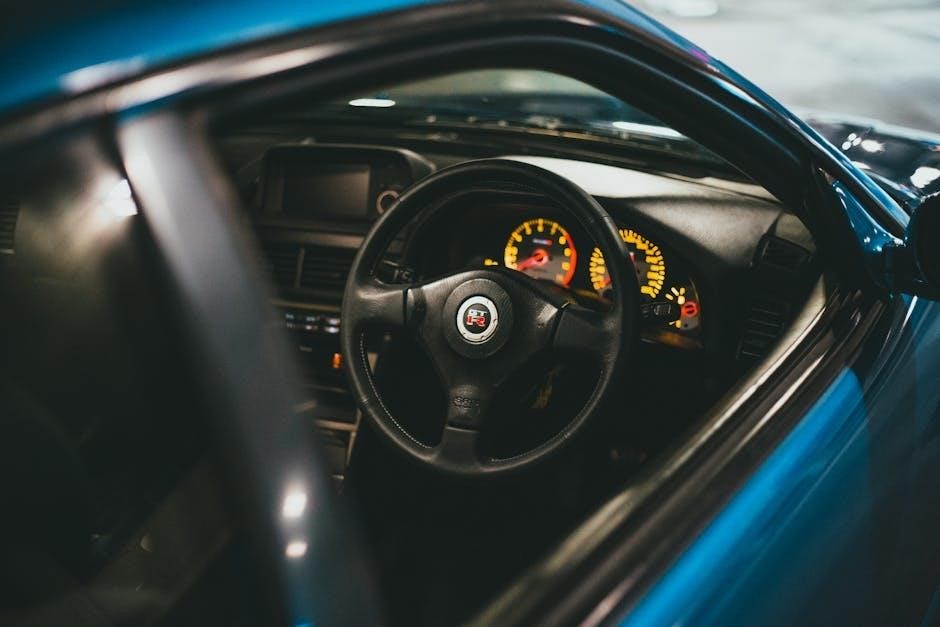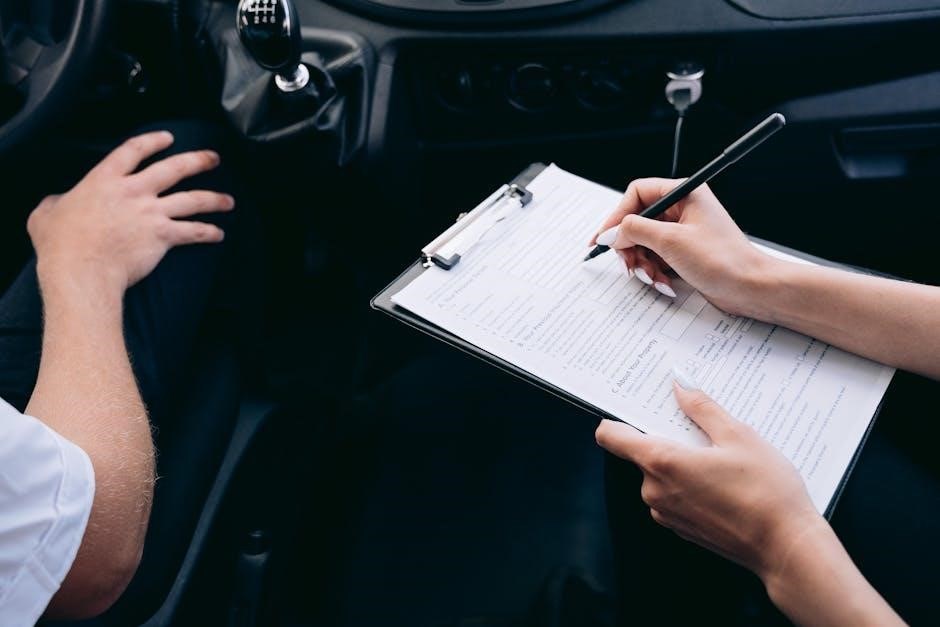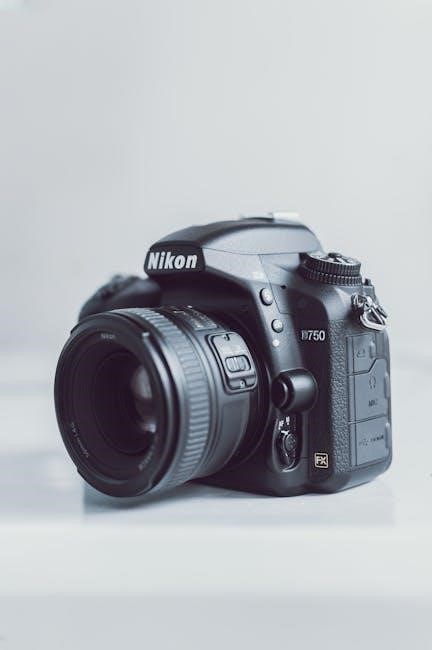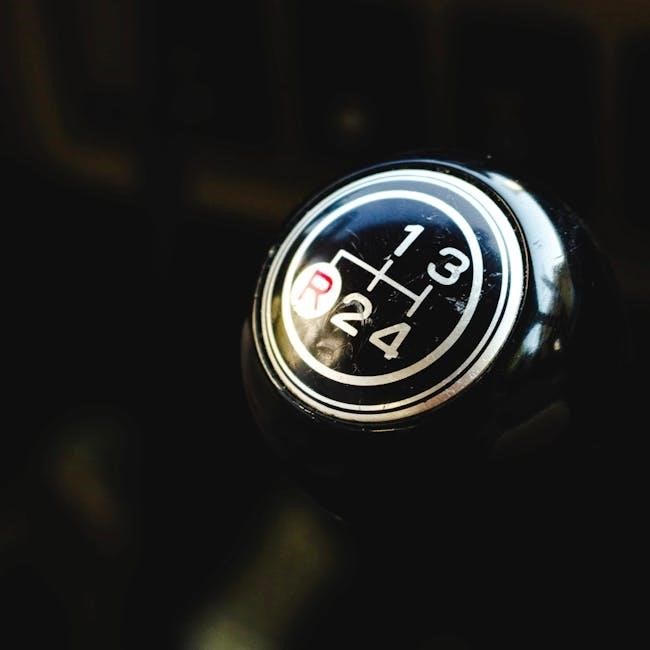Is Converting a Manual Transmission to Automatic Feasible?
While technically possible, converting a manual transmission to an automatic one is a complex undertaking. It involves significant modifications and component replacements. Feasibility hinges on factors like vehicle compatibility, parts availability, and cost considerations. Ultimately, it’s a decision requiring careful evaluation.

Factors Influencing the Decision
Several factors influence the decision to convert a manual transmission to an automatic. These include the vehicle’s make and model, the availability of necessary parts, and the overall cost. Evaluating these elements is crucial for a well-informed and practical conversion plan.
Vehicle Make and Model
The vehicle’s make and model significantly impact the complexity and cost of a manual to automatic transmission conversion. Certain vehicles are inherently easier to convert due to their design and the availability of compatible parts. Some models may have readily available conversion kits, simplifying the process.
Conversely, other vehicles may present significant challenges. Limited aftermarket support or complex integration requirements can increase the difficulty and expense. The ease of accessing the necessary parts and the straightforwardness of the modifications are crucial factors.
Older vehicles, for instance, might lack the electronic infrastructure required for modern automatic transmissions. This could necessitate extensive rewiring and modifications to the vehicle’s computer system. Similarly, some luxury or performance vehicles may have unique transmission designs, making it difficult to find compatible automatic transmissions.
Therefore, thorough research into the specific make and model is essential before proceeding with the conversion. Consulting with experienced mechanics or conversion specialists can provide valuable insights into the potential challenges and costs involved.
Availability of Parts
The availability of necessary parts is a critical determinant in the feasibility and cost of converting a manual transmission to an automatic one. A successful conversion requires a range of components, including the automatic transmission unit itself, a torque converter, potentially new axles, a wiring harness, and possibly a new ECU.
If these parts are readily available, the conversion becomes significantly more straightforward and cost-effective. Aftermarket suppliers, junkyards, and online retailers are potential sources for these components. However, the scarcity of specific parts can drastically increase the project’s overall cost.
For older or less common vehicles, finding compatible automatic transmissions and related components can be a significant challenge. Specialized or custom-made parts may be required, leading to higher expenses and longer lead times. Moreover, the quality and condition of used parts must be carefully assessed to ensure reliable performance.
Therefore, a thorough investigation into the availability of all necessary parts should be conducted before committing to the conversion. This includes checking for both new and used options, comparing prices, and verifying compatibility with the specific vehicle make and model;
Cost Considerations
Converting a manual transmission to an automatic one involves significant cost considerations. The financial implications extend beyond the mere purchase price of the automatic transmission itself. Several factors contribute to the total expense, demanding careful budgeting and evaluation.
First and foremost, the automatic transmission unit can be a substantial investment, ranging from a few hundred dollars for a used unit to several thousand for a new or rebuilt one. Related components, such as the torque converter, axles, wiring harness, and potentially a new ECU, further add to the material costs.
Labor costs represent another significant expense, particularly if you’re not performing the work yourself. The complexity of the conversion necessitates specialized knowledge and skills, potentially requiring a professional mechanic. Labor rates vary widely, impacting the overall project cost.
Additionally, unforeseen expenses may arise during the conversion process. Modifications to the vehicle’s chassis or electrical system could be necessary, leading to additional charges. It’s prudent to factor in a contingency fund to cover such unexpected costs.
Before undertaking the conversion, obtain detailed quotes from multiple mechanics, outlining all anticipated expenses. Compare the costs of new versus used parts, and carefully assess the potential long-term benefits against the overall investment.

Cost Breakdown
A conversion’s cost includes several elements. These encompass the automatic transmission unit itself, related components like the torque converter and wiring harness, and the labor involved in the installation process. Each aspect contributes significantly to the final expense.
Automatic Transmission Unit
The automatic transmission unit represents a major cost driver. Prices vary widely based on whether you opt for a new, rebuilt, or used unit. New transmissions offer reliability but come at a premium. Rebuilt units, offering a balance between cost and reliability, are often a popular choice. Used transmissions, while the cheapest option, carry the risk of potential issues and a shorter lifespan.
The specific make and model of your vehicle significantly influence the cost. Some vehicles may require specialized transmissions that are harder to find and thus more expensive. Availability also plays a role, as rarer transmissions can command higher prices due to limited supply.
Consider the long-term implications of your choice. While a used transmission might save money upfront, potential repairs or replacements could negate those savings in the future. A rebuilt or new transmission, although more expensive initially, may offer greater peace of mind and long-term value. Thorough research and careful consideration are essential when selecting the automatic transmission unit for your conversion project.
Related Components (Torque Converter, Axles, Wiring Harness)
Beyond the transmission itself, several related components contribute to the overall cost. The torque converter, essential for transferring engine power to the automatic transmission, must be compatible with both the engine and transmission. Axles may need replacement or modification to properly interface with the automatic transmission. This is because the gear ratios and overall dimensions can differ significantly from the manual setup.
The wiring harness is another critical component. An automatic transmission requires different electrical connections for its sensors and control systems. A new or modified wiring harness ensures proper communication between the transmission and the vehicle’s computer.
These components often necessitate careful selection and may not be directly interchangeable between manual and automatic transmission setups. Used parts might seem economical, but their condition and compatibility should be thoroughly verified. Investing in new or properly refurbished components can prevent future issues and ensure the reliability of the conversion. The cost of these related components can quickly add up, so it’s important to factor them into your budget.
Labor Costs
Labor costs represent a substantial portion of the overall conversion expense. The complexity of the conversion dictates the amount of time required, directly impacting the labor charges. Experienced mechanics with expertise in transmission swaps are essential for a successful conversion, as they can navigate the intricacies of the process.
Labor rates vary significantly depending on location and the mechanic’s skill level. Dealerships generally have higher labor rates compared to independent shops. However, dealerships may offer greater expertise and warranty options. The conversion process involves removing the manual transmission, installing the automatic transmission, modifying or replacing related components, and wiring the new transmission.
Furthermore, any unforeseen challenges or complications encountered during the conversion can increase the labor time and associated costs. It is prudent to obtain multiple quotes from different mechanics, ensuring they have experience with similar conversions. A detailed estimate should outline the hourly labor rate and the estimated number of hours required. Discuss potential complications and the process for handling unexpected issues to avoid future misunderstandings.
Estimated Conversion Costs
Estimating the cost to convert a manual transmission to automatic varies widely. It is dependent on the vehicle’s make and model, parts, and labor. Expect a range from $1,000 to $5,000, but obtaining quotes is critical for accuracy.
Average Price Range
The average price range for converting a manual transmission to an automatic one is quite broad. Several online sources suggest figures between $1,000 and $5,000. This substantial range indicates that the final cost is significantly influenced by factors like the specific vehicle model, the type of automatic transmission chosen (new, used, or rebuilt), and local labor rates.
Simpler conversions on vehicles with readily available parts may fall closer to the lower end of the range. However, complex conversions requiring extensive modifications or rare parts could easily exceed the upper limit. It’s also important to consider that the price of the automatic transmission unit itself can vary from a few hundred dollars for a used component to thousands for a new or rebuilt unit. Therefore, the final price often depends on whether you opt for a used transmission or a new one. Consulting with mechanics to obtain detailed quotes is necessary to determine the likely expense.
Factors Affecting Price Variations
Several key factors can significantly affect the price of converting a manual transmission to an automatic one. The most prominent factor is the vehicle’s make and model. Some vehicles are inherently easier to convert due to readily available parts and straightforward modifications, leading to lower costs. Conversely, rarer or more complex vehicles may require specialized parts and custom fabrication, driving up expenses.
The choice between a new, used, or rebuilt automatic transmission also significantly impacts the overall cost. A new transmission will be the most expensive option, while a used transmission may offer cost savings but carries a higher risk of future repairs. Rebuilt transmissions strike a balance between cost and reliability. Labor costs also vary depending on the mechanic’s experience and location. Conversions requiring extensive wiring or modifications to the vehicle’s computer system will also increase the overall cost. Finally, unexpected complications during the conversion process can add to the final bill.

Potential Benefits
While converting a manual transmission to an automatic is a substantial undertaking, some potential benefits might entice car owners. The most significant advantage is enhanced driving convenience, particularly in stop-and-go traffic. Automatic transmissions eliminate the need for constant clutch engagement and gear shifting, reducing driver fatigue and stress. This can be especially appealing for daily commuters or those who frequently drive in congested urban areas.
Furthermore, an automatic transmission can be more accessible for drivers with physical limitations that make operating a manual transmission difficult or impossible. The ease of use can also enhance the resale value of the car, as automatic transmissions are often preferred by a broader range of buyers. In specific cases, an automatic transmission may offer slightly improved fuel efficiency compared to a poorly driven manual. Finally, some drivers simply prefer the smoother and more relaxed driving experience offered by an automatic transmission.

Potential Drawbacks
Converting a manual transmission car to automatic presents several potential drawbacks that outweigh the benefits for most owners. The most significant deterrent is the high cost associated with parts, labor, and modifications. The price can easily range from $1,000 to $5,000 or more, depending on the vehicle and complexity.
Another significant drawback is the potential impact on the vehicle’s performance and fuel efficiency. An automatic transmission may not be as responsive or engaging as a manual, and it could reduce acceleration and overall driving enjoyment. Furthermore, the conversion process can be complex and time-consuming, requiring specialized skills and equipment; There’s also the risk of encountering unforeseen issues or complications during the conversion, leading to further delays and expenses. Finally, the conversion could potentially void the vehicle’s warranty or negatively affect its resale value due to the non-standard modification.
